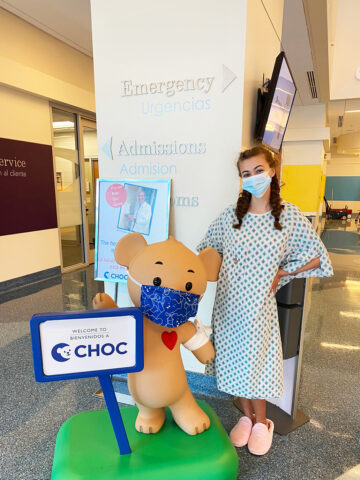Noticing a skin lump on a child can be scary for parents, and it’s easy to automatically assume the worst. Fortunately, most skin lumps are benign and not a major cause for concern, according to Dr. Saeed Awan, a pediatric general and thoracic surgeon at CHOC.
Some children are born with skin lumps, and some lumps appear later. The majority of patients with skin lumps will not have any other symptoms, but they can include pain, bleeding, redness, loss of appetite and night sweats. Surgery is often recommended in order to remove these skin lumps, to avoid the risk of infection.
VIDEO: Dr. Mustafa Kabeer, pediatric general and thoracic surgeon at CHOC, explains in why skin lumps occur in children and how they are treated.
Lymph nodes on child’s neck, around the ears, and back of skull
Lymph nodes are the most common lumps that parent notice and worry about. Most parents find lymph nodes in the neck area but can also notice them around the ears and at the back of the skull.
“A pea-sized, rubbery node beneath the skin is nothing to worry about,” says Dr. Awan. “Healthy lymph nodes fluctuate in size — they grow and they shrink, but bad lymph nodes keep growing and are not subtle.”
A lymph node over one centimeter in diameter needs further investigation by a medical professional, especially when associated with loss of weight or appetite, fever or night sweats.
Dermoid cysts
Dermoid cysts, another common lump, typically appear at the part of the eyebrow closest to the temple, but can occur in the middle (midline) of the neck or in the upper chest area. They are rubbery and the size of a pea. These cysts generally do not pose a hazard to your child’s health, but are typically removed to prevent infection. A midline dermoid cyst on the scalp needs more investigation from a pediatric surgeon.
Pilomatrixoma
Another common lump is pilomatrixoma, which usually appears on the face, neck or arms, and originates in the hair follicles. It usually manifests as a solitary, asymptomatic, firm nodule.
Hemangiomas
Hemangiomas develop in the skin when there is an abnormal buildup of blood vessels. This can occur at birth or shortly after. These lumps may increase in size during the first year and then go away on their own over the next three to four years. Most of these do not require surgery unless they are blocking the airway, vision or nostril. Lymphangiomas are rare, but are characterized by swelling on the side of neck.
Thyroglossal cysts
Thyroglossal cysts are the most common cause of midline neck masses and are generally located just below the hyoid bone, yet these neck masses can occur anywhere along the path of the thyroid gland.
Branchial cysts
Branchial cysts and sinuses are swelling on the side of the neck. They are typically removed in order to prevent infection. There are pre-auricular sinuses or skin tags. All of these need to be removed to prevent infection
If you see a skin lump on your child, consult your primary care doctor. If the lump changes size or color, or there is pain associated with the bump, or your child also experiences weight loss or appetite loss, night sweats or a fever, urgent evaluation and further investigation is needed.
For more health and wellness resources from the pediatric experts at CHOC, sign up for the Kids Health newsletter.
Find a CHOC Primary Care Pediatrician
From babies to teens, pediatricians from CHOC’s Primary Care Network partner with parents to offer immunizations, sick visits, sports physicals and more.





